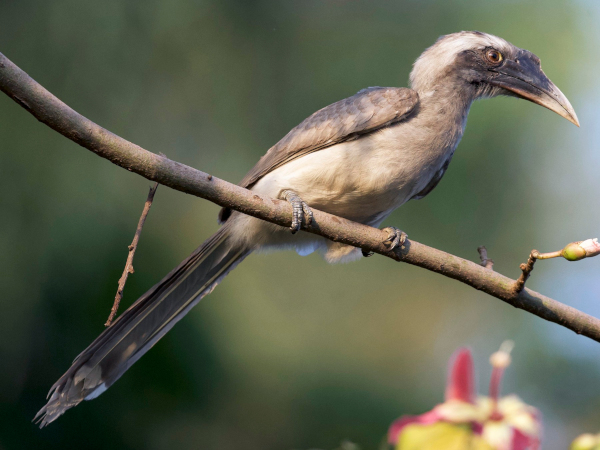Ahmedabad: Forest authorities have released 20 Indian grey hornbills into Gir National Park in Gujarat’s Junagadh since October to reintroduce the species, last seen at the sanctuary decades back.
Deputy conservator of forests (wildlife) Mohan Ram said there have sporadic sightings of the species in or around Gir since 1936. Out of the 62 species of hornbills globally, almost 48% are threatened, while 10 of the species are found in the Indian subcontinent.
Chief conservator of forests (Junagadh wildlife circle) Dushyant Vasavada said they plan to release 20 more hornbills in Gir as they expect the population of the species to be stable in the next three to four years. “Once their numbers in Gir reach about 500 pairs, it will be safe to assume that their population is stable.”
Late ornithologist RS Dharmakumarsinhji suggested reintroducing the species in Gir as they play a pivotal role in the forest ecosystem.
Dishant Parasharya, a scientist with Bombay Natural History Society, said hornbills are frugivorous, or fruit-eating birds, that disperse seeds of large trees such as Ficus. They often travel great distances in search of fruits, leading to the dispersal of seeds. “This helps in restoring the connection between forest patches, playing a critical role in maintaining the structure of an ecological community.” They are slow breeding species, with the female laying just two eggs in a breeding season.
Nine hornbills were first captured and released in Gir in October and December. “…another batch of 11 birds were captured and released in the Gir landscape on February 24. Out of these 11, two male birds were released with solar-powered satellite transmitters. One tagged male has been named LK in the memory of the late Lavkumar Khachar, a renowned ornithologist. The birds were released on his birthday, February 24,” said Ram.
The satellite-tagged birds are regularly monitored and were found to be moving normally in the Gir landscape. The tagging is expected to generate data for the conservation of the species.
Source: HT
You may also like
-
Plasma-Based Green Disinfectants can Limit Spread of Infectious Diseases like COVID 19
-
New Technology to Help Combat Climate Change
-
For the First Time in 11 Years, the Number of Domestic Patent Filing Surpasses the Number of International Patent Filing in India
-
Beware! Chinese Hackers are Using VLC Media Player to Spy on You
-
HAL-L&T Wins Over INR 824-Crore Contract for Making 5 Polar Space Launch Vehicles
